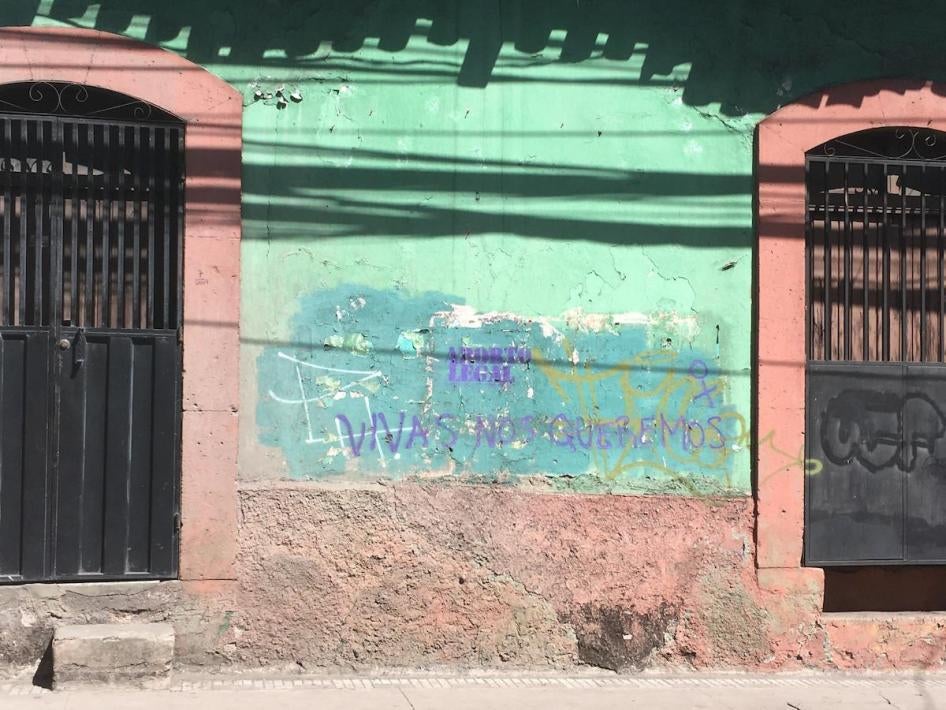As Republicans in states around the country pass sweeping abortion bans, I think about what life could be like for women and girls if these laws take effect. I don’t have to use my imagination.
Women and girls across Latin America are already living in places where abortion is heavily restricted or completely banned. In the past year, I’ve done research for Human Rights Watch in two countries that ban abortion completely, without any exceptions, even if the woman’s life is in danger.
In the Dominican Republic, I spoke with Rosa Hernández, whose daughter Rosaura Almonte Hernández, known as “Esperancita,” was diagnosed with leukemia. Doctors initially denied her chemotherapy because she was pregnant, and then refused to end the pregnancy because to do so would have been against the law. She died in 2012 at age 16. “They let my daughter die,” her mother told me.
I met a health educator in the Dominican Republic who fought back tears as she told me how, a few weeks prior, she counseled a pregnant 11-year-old girl who had been raped by her stepfather. “She’s just a little girl. She doesn’t know what’s going on in her life or in her body,” she said. But because abortion is illegal even for pregnancies from rape or incest, the educator had no options other than to refer the girl for prenatal care.
In Honduras, I met a young woman facing jail time after having a miscarriage. Unaware that she was even pregnant, she went to a hospital in intense pain. Doctors suspected she had attempted an abortion and called the police. She was taken from the hospital in handcuffs and remains under court supervision pending a trial date.
This is what banning abortion looks like in 2019. And this is where the United States could be headed if the courts permit cruel state laws like those passed in Georgia and Alabama to weaken or dismantle the rights protected in the landmark 1973 Roe v. Wade decision.
I carry these heartbreaking stories with me, but I also think of the dozens of women I’ve interviewed who told me how they defied strict abortion laws to end pregnancies they knew they couldn’t continue. Research from around the world has shown that banning abortion doesn’t stop it from happening — it just drives it underground.
Clandestine abortion is safer than it used to be because of medication, but even in 2019, women still die from unsafe abortion.
In Brazil, a country where abortion is illegal except in strictly limited circumstances, Ingriane Barbosa Carvalho, a mother of three in her early 30s, died last year from a botched abortion by a back-alley provider. An obstetrician-gynecologist in the Dominican Republic told me about a 19-year-old woman who came to the hospital in septic shock after an unsafe abortion two years before. She died despite the doctor’s efforts to save her.
When abortion is heavily restricted or banned, women from poor, rural and marginalized communities suffer most, as they may not be able to afford to travel to places where abortion is legal, or pay what it costs.
Around the world, an estimated 8 to 11 percent of maternal deaths are caused by unsafe abortion. In May, the Centers for Disease Control and Prevention released data showing that hundreds of women die in the United States each year from preventable complications related to pregnancy. Preventable maternal deaths will only increase if access to abortion is further restricted.
If policymakers in states like Alabama and Georgia are concerned with protecting life and reducing abortion, the new laws they are enacting will not have that effect. Unplanned pregnancies will still happen, as they always do, and women will still need abortions. But these will happen behind closed doors, and more women and girls will be injured or die.








